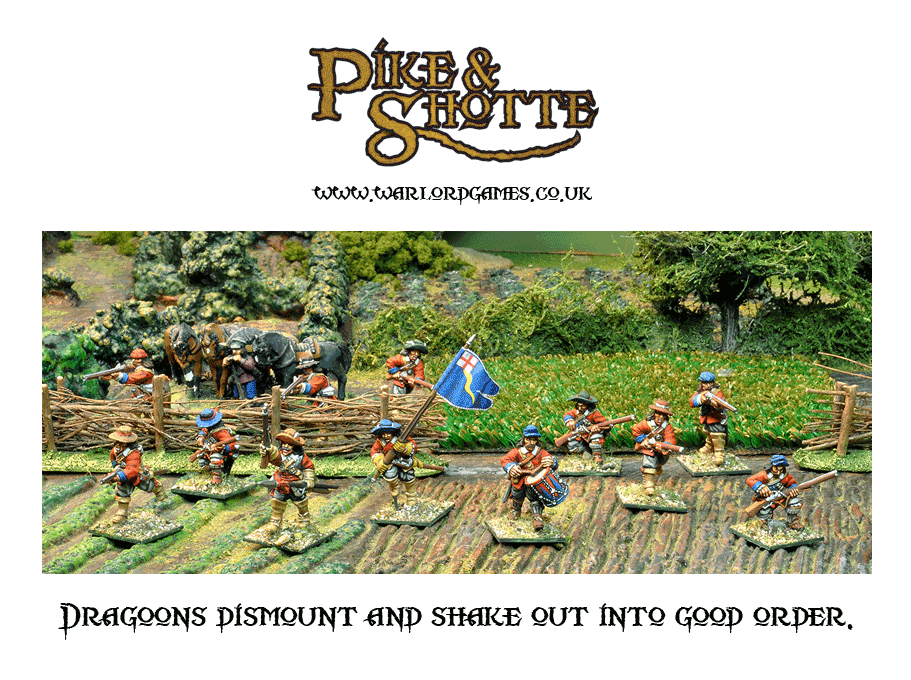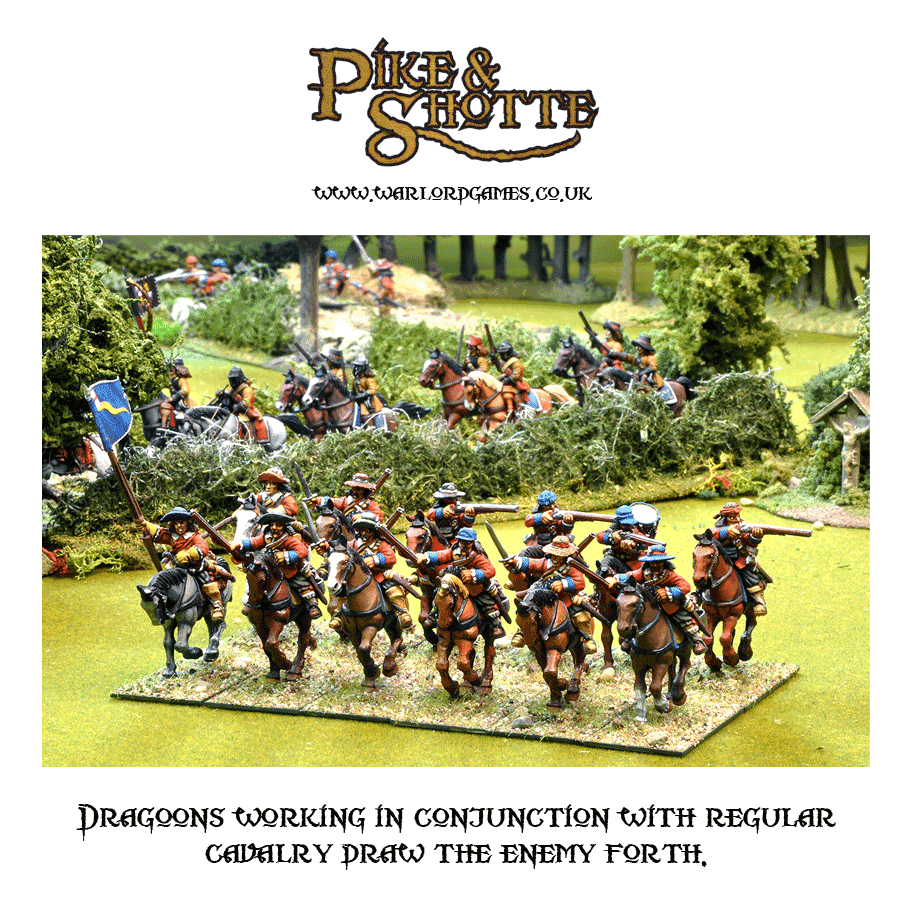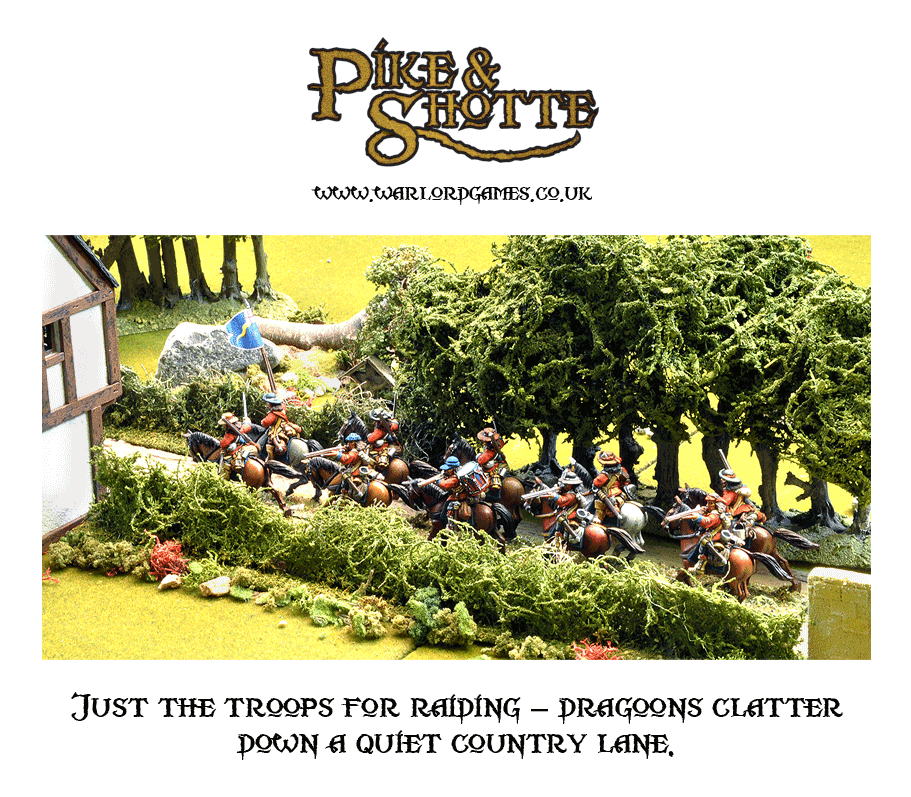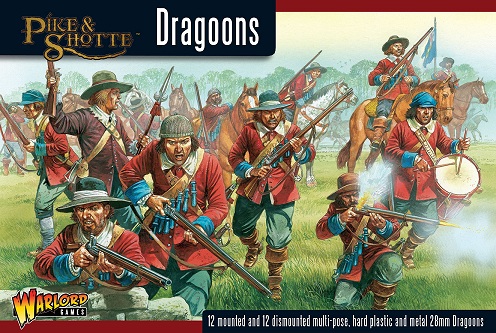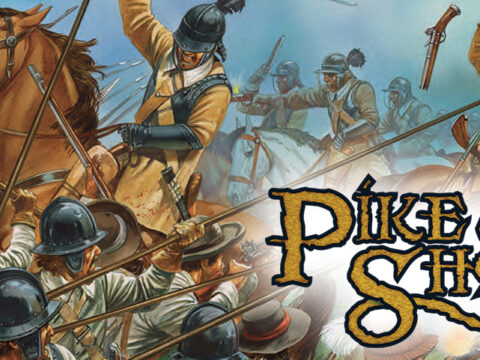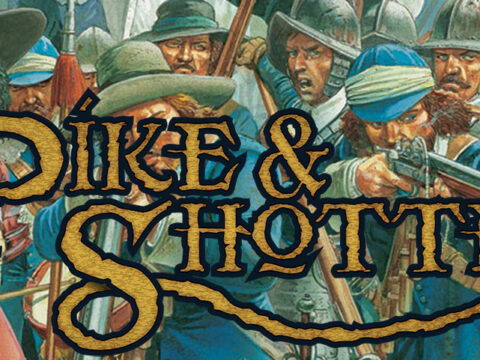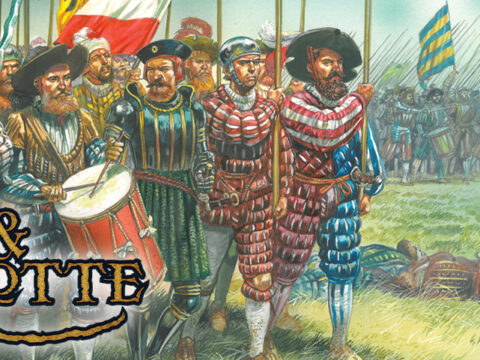A brief discourse on the nature of Dragoons in the Pike & Shotte period by John Stallard.
The Dragoon seems to have acquired his name from his principle weapon – the ‘dragon’, a short but large-bored flintlock firearm, slung from a broad buff leather belt and hanging from his side so he could ride unencumbered. Two early definitions tell us what they were originally envisaged for – “The last sort of which our horse troops are compounded, are called Dragons (sic), which are a kind of footman on horseback, and are of singular use in all the actions of warre” (Gervase Markham’s ‘Soldier’s Accidence’, 1625.)
Robert Ward, writing in ‘Animadversions of Warre’ (1639), “The Dragoones (sic) are no less than a foote company, consisting of pikes and muskets, only for their quicker expidition they are mounted upon horses, they are of greate use for the guarding of passages and fordes, in regard to their swiftness thay may prevent the enemy foote, and gaine places of advantage to hinder their passage”.
The origin of dragoons seems to have started in France, in the late 16th century, acting as mounted shot, and by the 17th century, both Swedish and Dutch forces were fielding large numbers of dragoons. In Britain, the first recorded unit of dragoons seems to be the 600 raised from the Duke of Northumberland’s tenants to go and fight the Scots in the Bishops Wars in 1639.
These two early writers truly see the dragoon as merely a fast-moving infantryman, Ward advocating that pike should be carried too, albeit with “a thong of leather” to help keep the man in the saddle! It would seem that in continental Europe pike-armed dragoons were to be seen clattering about, though no record can be found of similar troops seeing service in Britain.
The dragoons’ roles were many and varied. Relatively cheap to equip and keep, the troops were used to control large areas of the countryside – raiding, ambushing, and foraging, whilst by their nature able to dismount and hold a bridge, hedgerow or house if needs be from enemy infantry or cavalry.
The dragoons also found themselves doing more than their fair share of piquet and outpost duty, where their doglock muskets would not betray them at night, as would a glowing matchlock, whilst saving an army a fortune in needlessly burnt matchcord! Their constant usefulness to commanders has made some historians speculate that dragoons despite being “maids of all work”, were often tough and experienced troopers.
In battle, their task was less certain. Not having a quality heavy horse like the cavalry, and no defensive arms they could not stand up to enemy cavalry. Indeed General Monke suggested that they all should carry ‘swine feathers’, a wooden spike with two pointed ends that could be driven in to the ground to form a defensive hedge. Nor could they resist strong enemy infantry, as they had no pike to support them and a proportion of their men were busy holding horses in the rear. Because of these facts, they were rarely used in the front line in battle.
That being said, they could be used for a specific purpose, as at Marston Moor where Fraser’s Scottish dragoons were tasked with clearing the ditch in front of the Royalist army, or Naseby where Okey’s New Model Army dragoons were placed in the hedgerow on the flank of the army to shoot at Royalist cavalry who passed by.
When dismounted, their horses were led to the rear, and the dragoons formed up in regular musketeer fashion, and commanded by drum calls. They could give fire in a number of ways, notably by introduction whereby they slightly advanced, or by extraduction whereby they slowly retired. In emergency or ambush all three ranks could give fire simultaneously which though potentially devastating, left them vulnerable to attack. Theoretically, fire could be given from the saddle, but one must ask how effective that could be.
By the end of the Thirty Years War and the English Civil Wars, almost all dragoons had reliable doglock or flintlock weapons, though the Royalist forces certainly were poorly armed, Grey’s regiment having a mix of matchlock weapons and firelocks.
Recent research also suggests that dragoons often paired up with true cavalry regiments to give what we would now call fire support, and there may be some evidence to show that as the wars dragged on, the distinctions between horse and dragoon became somewhat blurred.
Here is a listing of the proposed Dragoon units to be formed for the Royalist army in 1642, note not all by any means were realised….
Sir Thomas Salisbury – 200 in Denbigh
Earl of Chesterfield – 500 in Derby
Alan Butler – 2000
John Heynes – One troop
Sir Vincent Corbett – 2000 in Shropshire
Thomas Hammer – 2000 in Flynt and Denbyshire
LO.Chandos – 500
John Fitzherbert – One regiment of horse or dragoons in Derbyshire
Sir Richard Byron – One troop of horse, one troop of dragoons
Lewis Kirk – 600Alan Aspley – One troop
Sir Vincent Corbett (again) – One troop of dragoons in Salop
Sir Thomas Aston – 500 dragoons in Cheshire
Earl of Crawford – One regiment of horse, one of dragoons in Cumberland
Sir Baynham Throckmorton – 2000
Edmund Chamberlayne – One regiment 500 in Oxon
Interested in collecting Dragoons for your own army?
No problem, just head here to see what we have for you!

